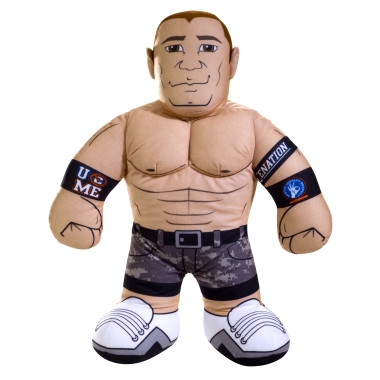Play is the highest expression of human development in childhood, for it alone is the free expression of what is in a child’s soul -Friedrich Froebel
My son erupts in giggles as he’s tossed into the air, my heart skipping a beat as I catch my breath, my daughter laughing until she is red in the face. “I think I just aged 5 years” I tell my husband as I force myself not to interrupt their play. I had always heard that the way fathers play with their children is different. My son and I build LEGOS together and my daughter and I color, read and play with dolls…in contrast to the outdoor playtime they get with my husband or the indoor giggle fests. As much as I don’t want to admit it, my children need both types of play.
Last month, I participated in a very unique webinar with children’s physical activity specialist Rae Pica and Mattel to talk about the role and benefits of Rough and Tumble Play. I have to admit that when I hear the term, often synonymous with roughhousing, I think of kids wrestling and playing roughly. I worry about acts of aggression and kids getting injured. The information I learned was insightful and helped shape my perspective on a form of play that not only has many benefits for children (particularly boys), but is a necessary part of their development.
What is rough and tumble play?
This type of play can involve chasing, fleeing, playing tag, falling on one another, and/or wrestling. With rough and tumble play, there is an understanding of play and collaboration.
What rough and tumble play is not
This type of play should not involve domination or intimidation which can foster an attitude of aggression.
What are the benefits of rough and tumble play?
Boys experience a spike in testosterone around the age of four, and rough and tumble play can help provide an outlet for those feelings of playful aggression.
Rough and tumble play can help boys learn their power, develop competence in their motor skills and imitate positive role models.
This type of play also helps boys develop positive problem-solving skills and understand their boundaries.
Lastly, rough and tumble play gives children an opportunity to learn about perceptual, math, and science skills through the concepts of speed, force, balance, spatial relationships, and cause and effect, and has been linked to academic achievement
How can parents help children learn the difference between aggression and rough and tumble play?
It is important to establish rules such as no touching faces and no shoes during rough and tumble play but be sure to allow children to be in charge of making and enforcing some of those rules
Intervene only when play becomes aggressive so children learn conflict resolution on their own
If you aren’t sure whether rough and tumble play has turned into fighting, ask and be sure everyone agrees
Parents should also engage in rough and tumble play such as wrestling or tickle fights to help build relationships with their children

In advocacy of rough and tumble play, Mattel introduced Brawlin’ Buddies earlier this year. When Mattel acquired the World Wrestling Entertainment license, their aim was to help children authentically recreate all of the action of their favorite Superstars. Brawlin’ Buddies is one of the toy lines that was developed to allow children to engage in rough and tumble play while playing out those storylines both individually and cooperatively. These soft plush toys, specifically designed for boys, feature 10 sounds and use the Superstars’ real voices. There are currently four figures in the line each measuring 16 inches in height! Boys as young as three can create and recreate their favorite action storylines, imitate their favorite WWE Superstars, and learn to collaborate by uniting to become the newest WWE Tag Team Champion. This new line offers boys a way to fulfill their need for active play.
As a parent, I constantly struggle with that desire to raise a little boy who is kind and empathetic yet strong and assertive. I believe a variety of types of play are important, and with the appropriate guidelines and supervision, rough and tumble play is an important part of his development.
For additional articles in support of active play, visit the following resources:
No compensation was received for this post. I attended a webinar and the information learned was used to help facilitate this post.
- Discover Luxury at Sonesta Irvine: Your Ideal Staycation - August 8, 2024
- CHOC Walk Returns to the Disneyland Resort – Special Events and Ways to Support - June 28, 2023
- Beastly Ball Returns to the Los Angeles Zoo - May 8, 2023

I just thought Rough and tumble play was just a simple “BOY” thing. I never knew it had so much to do with proper development. It’s something I just accepted was different between my boys and their sister. As long as no one ever got hurt; it was fine by me. But I had no idea they were learning so much. How cool.
I don’t have a boy, but both of my girls love rough and tumble play. They would probably get a kick out of Brawlin buddies.
My daughter also loves rough and tumble play, I think she would like this.